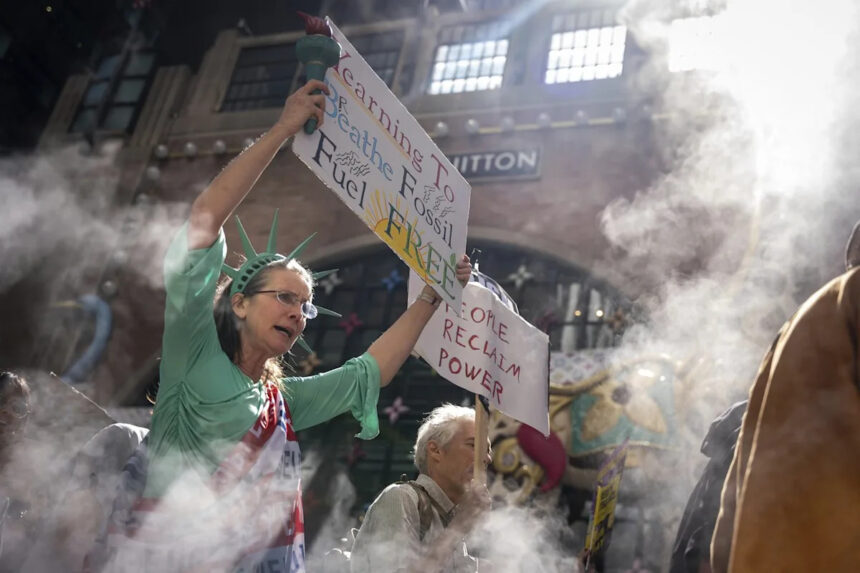In a remarkable display of coordinated activism, thousands of demonstrators converged on financial districts across major global cities yesterday, demanding that banks end their financing of fossil fuel projects that accelerate climate change. From Toronto’s Bay Street to Wall Street in New York and the financial hubs of London, Paris, and Sydney, protesters delivered a unified message: financial institutions must divest from climate-destroying ventures or face escalating public pressure.
“We’re targeting the money pipeline that fuels climate disaster,” said Amara Sanchez, a climate organizer who led protesters through Toronto’s downtown core. “Canadian banks have poured over $911 billion into fossil fuel projects since the Paris Agreement was signed. That’s not just poor environmental stewardship—it’s a betrayal of future generations.”
The demonstrations mark a strategic shift in climate activism, focusing less on governmental policy and more directly on the financial enablers of carbon-intensive industries. In New York, where over 3,000 protesters blocked entrances to JP Morgan Chase headquarters, participants carried signs displaying the bank’s fossil fuel investments—$382 billion since 2016, according to Banking on Climate Chaos reports.
These protests didn’t emerge spontaneously. They represent the culmination of months of planning by a coalition of environmental groups including Extinction Rebellion, 350.org, and Indigenous-led movements whose territories face direct impacts from pipeline expansions and extraction projects.
Financial analysts are beginning to acknowledge the significance of this pressure campaign. “We’re seeing a material shift in how investment risk is calculated,” noted Dr. Helena Wei, economist at the Institute for Sustainable Finance in Canada. “Banks continuing high-carbon investments now face reputation damage, potential stranded assets, and mounting shareholder activism questioning these decisions from a purely financial perspective.”
The banking sector’s response has been measured but defensive. The Canadian Bankers Association released a statement emphasizing their members’ commitments to net-zero targets while arguing that “an immediate and total withdrawal from traditional energy financing would destabilize markets and harm everyday Canadians dependent on these industries.”
What distinguishes these protests from previous climate actions is their explicit financial literacy. Protesters displayed sophisticated understanding of banking operations, with many distributing pamphlets detailing specific investment portfolios and identifying greenwashing tactics in sustainability reports.
In London, demonstrators deployed theatrical elements, with performers dressed as bankers washing “blood money” in front of Barclays headquarters, highlighting the bank’s position as Europe’s largest fossil fuel financier. Similar scenes unfolded across world capitals, coordinated to maximize global media coverage.
Perhaps most notable was the multi-generational character of these protests. While youth activists remained prominent, their ranks were significantly bolstered by professionals, retirees, and working-class participants concerned about climate impacts on their communities and investments.
“I’m a retired investment advisor,” said Thomas Blackwell, 67, at the Toronto demonstration. “I spent decades helping people build wealth. Now I’m fighting to ensure there’s a habitable planet where that wealth holds meaning. These banks are breaching their fiduciary duty to consider long-term risks.”
As central banks and financial regulators increasingly recognize climate risk as financial risk, these protests reveal growing public understanding of how abstract investment decisions translate to concrete environmental outcomes. The demonstrators’ sophistication reflects a maturing climate movement capable of targeting economic pressure points rather than simply appealing to moral arguments.
As night fell across different time zones, protest organizers vowed this represented just the beginning of a sustained campaign targeting financial institutions. With major banks’ annual shareholder meetings approaching in spring, the question now becomes: will these institutions substantively change their investment practices, or will they face increasingly disruptive challenges to their social license to operate in a climate-conscious world?










